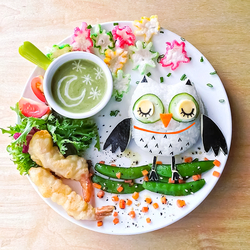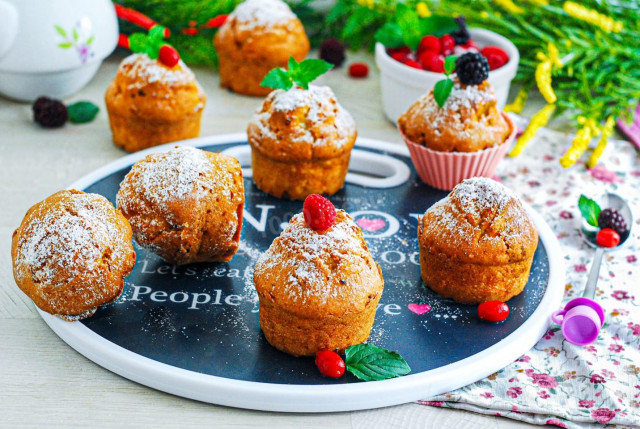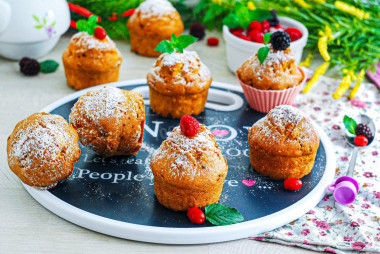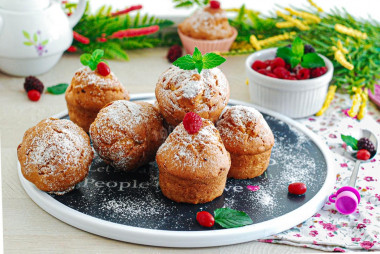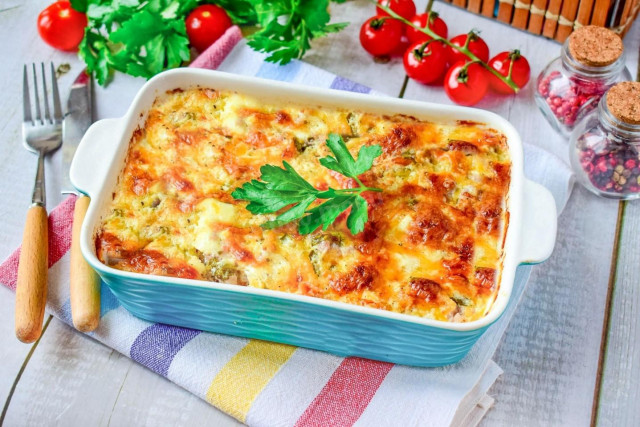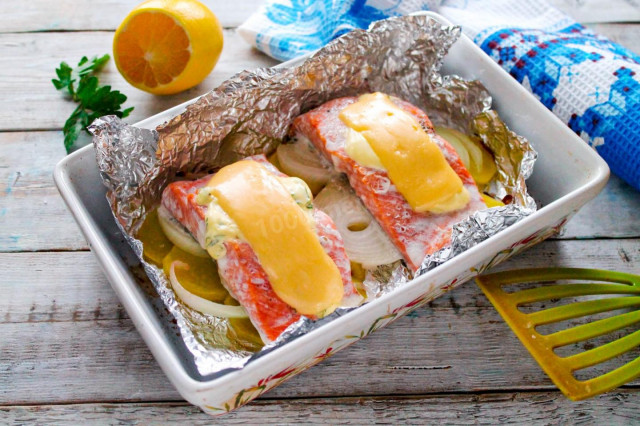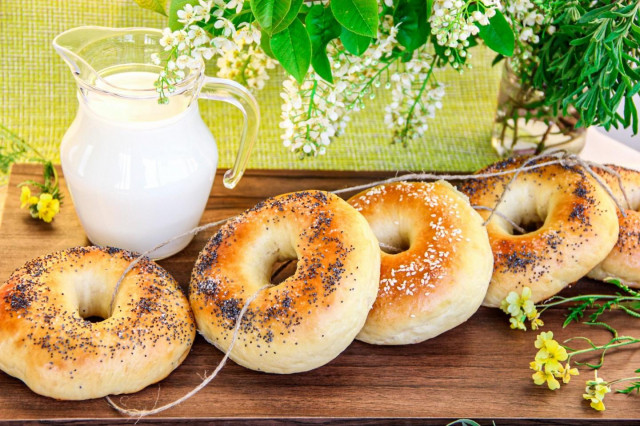Composition / ingredients
Step-by-step cooking
Step 1:
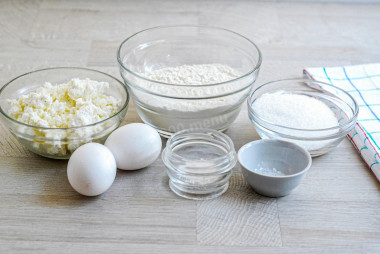
How to make cottage cheese muffins in the oven in silicone molds? Prepare the necessary ingredients. Take good quality butter, as the taste of baking will depend on it. Cottage cheese is suitable for any fat content. It is better that it be pasty, smooth, not too wet. Rub the granular cottage cheese through a sieve or punch it in a blender to a homogeneous consistency without lumps.
Step 2:

Sift the flour into a suitable container. This is necessary in order to enrich it with oxygen, then the baking will be treated lush and airy.
Step 3:

Drive the eggs into a deep dry container, be sure to wash them beforehand and wipe them dry with paper towels. Add a pinch of salt and beat with a mixer until fluffy.
Step 4:
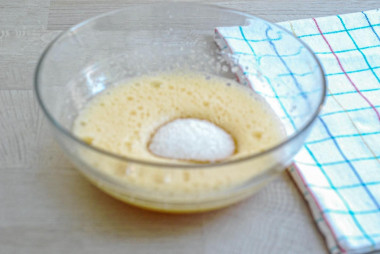
Without stopping whipping, add sugar in parts. Continue to beat with the mixer until the mass lightens and becomes lush.
Step 5:

Add the mashed cottage cheese to the egg mass. Beat with a mixer until smooth.
Step 6:
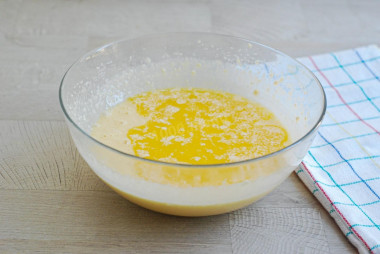
Melt the butter in a water bath or in the microwave. Add to the total mass and beat everything again with a mixer.
Step 7:

Mix part of the flour with baking powder, so it will be evenly distributed over the dough. Add the flour, but not all at once, but in parts. Each time kneading the dough well with a spoon or silicone spatula. Please note that you may need more or less flour than indicated in the recipe. Focus on the consistency of the dough. It should be a little thicker than on pancakes.
Step 8:

Silicone molds do not need to be pre-lubricated with anything, since there is already oil in the dough and the baking will not stick to the silicone. Fill the molds to 2/3 of the height (about 1 table. l) test. Bake in a preheated 180 °C oven for about 30 minutes (I have an electric oven top-bottom mode). Focus on your oven.
Step 9:
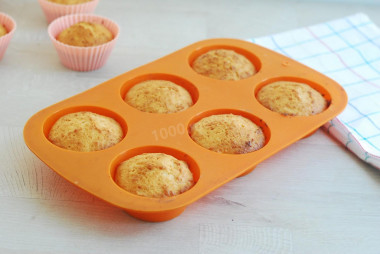
How to determine the readiness of muffins? Focus on the color of the baking. When the muffins are browned, pierce them with a wooden skewer or toothpick. If it comes out dry, without sticking dough, then it's done. Take the pastries out of the oven. Cool slightly and remove warm from the molds. You can decorate muffins with powdered sugar, fresh berries, fresh mint leaves.
Step 10:

The texture of the muffins turned out to be airy, dense, although quite loose. Pastries are perfect for breakfast with a cup of tea or coffee.
Vanilla sugar or vanillin can be added to the flavor dough on the tip of a teaspoon (I have about 1 g read the instructions on the package).
Unlike cupcakes and cupcakes, it is not customary to decorate muffins with cream magnificently. But, if you really want to, then it is not forbidden. Options for making cream for decorating cupcakes see here .
Be sure to wash the eggs before use, as even the seemingly clean shell may contain harmful bacteria. It is best to use food detergents and a brush.
Butter can be melted in the microwave or in a water bath.
How to melt butter in the microwave?
Cut the butter into small pieces and place it in a special container. To prevent the oil from splashing when heated, cover the oil vessel with a paper towel. The oil should be melted either at the lowest power or in defrosting mode. At first, five seconds will be enough. Next, if the butter has not melted yet, set it again for 5 seconds and start the microwave. Repeat the process several times until the desired result.
How to melt butter in a water bath?
You will need two containers of different diameters. Pour water into a large one and put it on the stove. Place the smaller container on top so that it is submerged in water by about half. Put the sliced butter into it. Under the influence of boiling water, the oil will begin to melt. Stir the oil slightly to speed up the process. As soon as the pieces of oil are completely dissolved, remove the container from the stove.
Keep in mind that everyone's ovens are different. The temperature and cooking time may differ from those specified in the recipe. To make any baked dish successful, use useful information about the features of ovens !
Caloric content of the products possible in the composition of the dish
- Cottage cheese of 40% fat content - 466 kcal/100g
- Cottage cheese of 20% fat content - 233 kcal/100g
- Cottage cheese of 18% fat content - 226 kcal/100g
- Cottage cheese of 10% fat content - 156 kcal/100g
- Low-fat cottage cheese - 75 kcal/100g
- Cottage cheese with sour cream - 260 kcal/100g
- Fruit cottage cheese - 147 kcal/100g
- Soft dietary cottage cheese - 170 kcal/100g
- Vitalinia cottage cheese - 64 kcal/100g
- Cottage cheese "morning" ( "danone") without sugar - 91 kcal/100g
- Cottage cheese - 156 kcal/100g
- Granulated sugar - 398 kcal/100g
- Sugar - 398 kcal/100g
- Butter 82% - 734 kcal/100g
- Amateur unsalted butter - 709 kcal/100g
- Unsalted peasant butter - 661 kcal/100g
- Peasant salted butter - 652 kcal/100g
- Melted butter - 869 kcal/100g
- Salt - 0 kcal/100g
- Wheat flour - 325 kcal/100g
- Baking powder - 79 kcal/100g
- Chicken egg - 80 kcal/100g
